The Endless Summer:
Late-Season Wine Pairings
As seasons go, you could argue that summer gets short shrift. Sure, there are vacations, holidays, vacations,
picnics, vacations, outdoor activities, vacations, hitting the waves, vacations, chilling on the sand, and… vacations.
But when it comes to celebrating the bounty of nature that seasons have to offer, summer is more or less an afterthought.
That’s a shame, because there’s actually quite a bit of produce that comes into its best shape in the waning
days of the North American summer, and some of it is among nature’s most delicious and versatile food.
Still, if you’re a summer-produce lover as well as a wine lover, you’ve got a particularly tricky challenge on your hands;
it’s notoriously difficult to pair up wine with the bold flavors of summer’s fruits and vegetables.
Fear not, intrepid summer-sun-chaser, because we’ve got your (probably slightly sunburned) back!
While the season’s food-and-wine pairing might be a little trickier to navigate than at other times of the year,
with a little bit of knowledge under your belt, you needn’t be
afraid to grab the corkscrew along with the sunscreen and beach towels for your next summer gathering.
Here are wine recommendations to match up with some of summer’s best produce,
along with an explanation of why those matches work so well.
We’ll also look at what wines to avoid, just to be on the safe side.
Avocados with Sparkling Wine
Native to south-central Mexico, the avocado is technically a berry, albeit one with a single (very)
large seed. The “alligator pear” (seriously… just look at it)
is a bit of a miracle; it’s not only tasty, it’s also fiber-rich, it helps increase your HDL (“good”)
cholesterol while lowering your LDL (“bad”) cholesterol, and it might even have anti-aging effects for your skin.
There’s little reason not to include avocados in your summer meals, unless you don’t like
things that are a bit sweet and creamy (in which case, you might have deeper culinary issues).
It’s that combination of texture and sweetness that makes the avocado tricky to pair with wine.
Your best bet is to go with vino that can cut through the avocado’s fattiness, like sparkling wine.
Sparkling wines are almost universally high in lip-smacking acidity, which can slice through the creaminess.
The bubbles also help to tame the sweetness of the avocado (carbonation makes things taste “drier” in the mouth).
Look for prosecco, Crémant de Loire, or cava if you’re on a budget, or Champagne if you’re feeling extravagant.
As an alternative, zesty, pungent white wines like sauvignon blanc will also work.
Just be sure to avoid higher-bodied wines, like malbec and chardonnay, as they could make the meal feel a bit bloating.
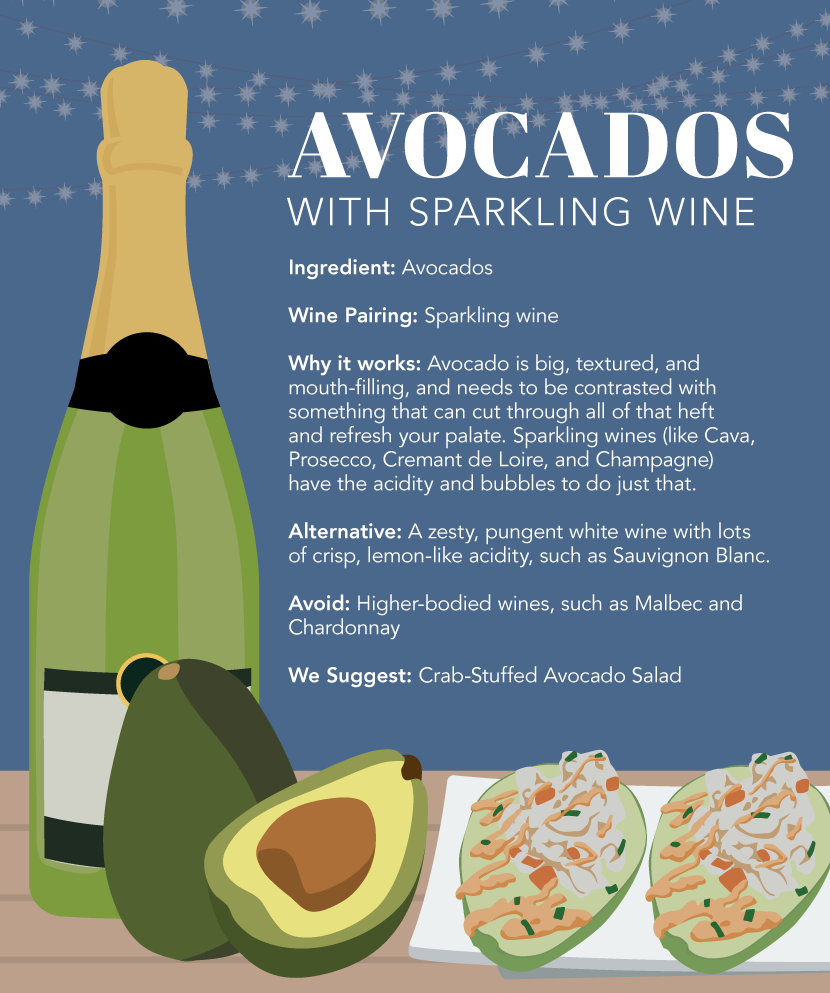
Peaches with Pinot Gris
Peaches, native to China, have been growing for over 2.5 million years.
Since being brought to the Americas by Spanish explorers in the sixteenth century,
the humble peach has been cultivated into hundreds of cultivars, many with unique textures and flavors.
You could argue that the peach is almost as complex and diverse as the fine wine grape.
Fortunately, most of the peaches we’re likely to encounter share a distinctive aroma and flavor that is easily recognizable.
In fact, it’s so distinctive that it’s one of the most commonly used descriptors in tasting notes for its best wine match: pinot gris.
The boisterous peachy flavor and mouth-watering juiciness of pinot gris complement peach-heavy summer recipes.
For best results, try a pinot gris from Austria, Germany, northern Italy, or California,
which tend to combine a similar palate “weight” to peaches, along with having peach-like flavors.
In a pinch, a fruity California chardonnay will also work with peaches (just look for an unoaked or a low-oaked version).
Avoid red wines, particularly those high in mouth-puckering tannins (like cabernet sauvignon), which could clash with the peach’s juiciness.
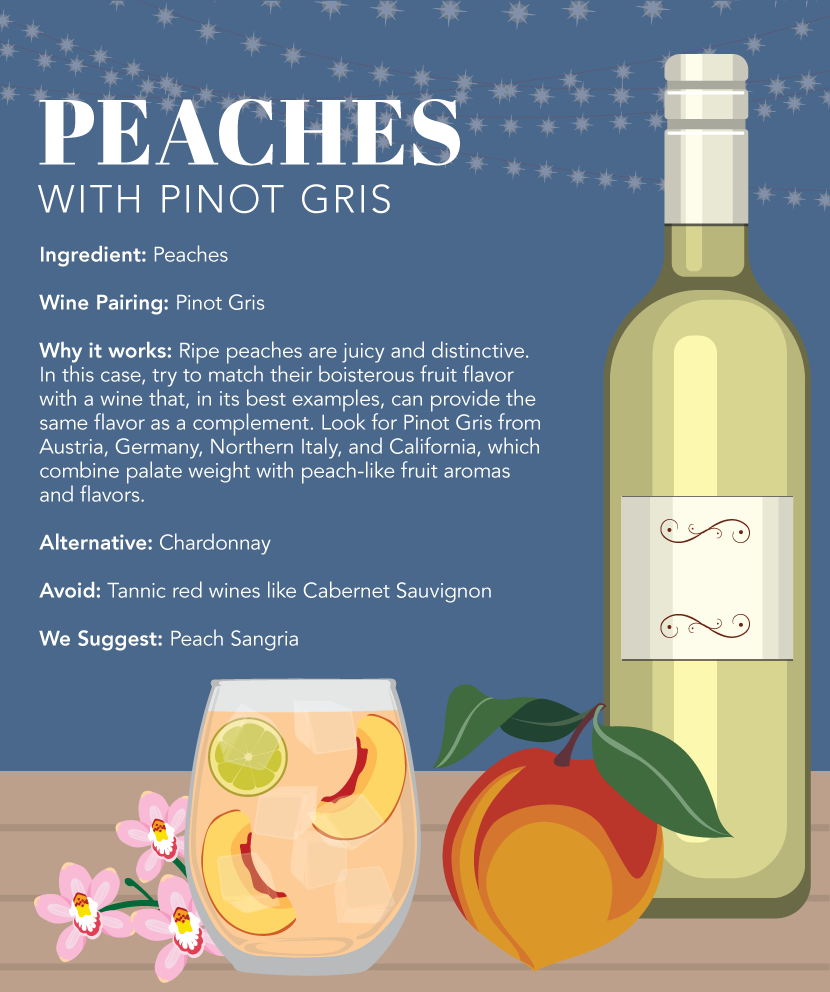
Radishes with Rosé
Another Chinese native, the radish is a workhorse of the vegetable garden.
This relative of mustard and cabbage grows quickly, is easily transported (by the 1600s,
it had reached Massachusetts), is low in calories, and adds a distinctive earthy, spicy flavor to dishes.
The sharp flavors of this vegetable need a wine that’s also flavorful, but which can offer enough powerful acidity
and fragrance to stand up to the radish’s mightiness. Look for rosé wines made from pinot noir, grenache, or syrah.
Pink wines made from those grapes tend to retain their mouth-watering acidity (which helps counter that spice),
but also provide complementary notes of pepper, earth, and their own pepper-like spices.
While an off-dry rosé will probably work best, most dry versions will be just fine in the company of radishes, too.
You could also opt for a rosé made from malbec or sangiovese as an alternative.
Steer clear of higher-alcohol, full-bodied wines – red or white – as those might over-accentuate the radish’s spiciness.
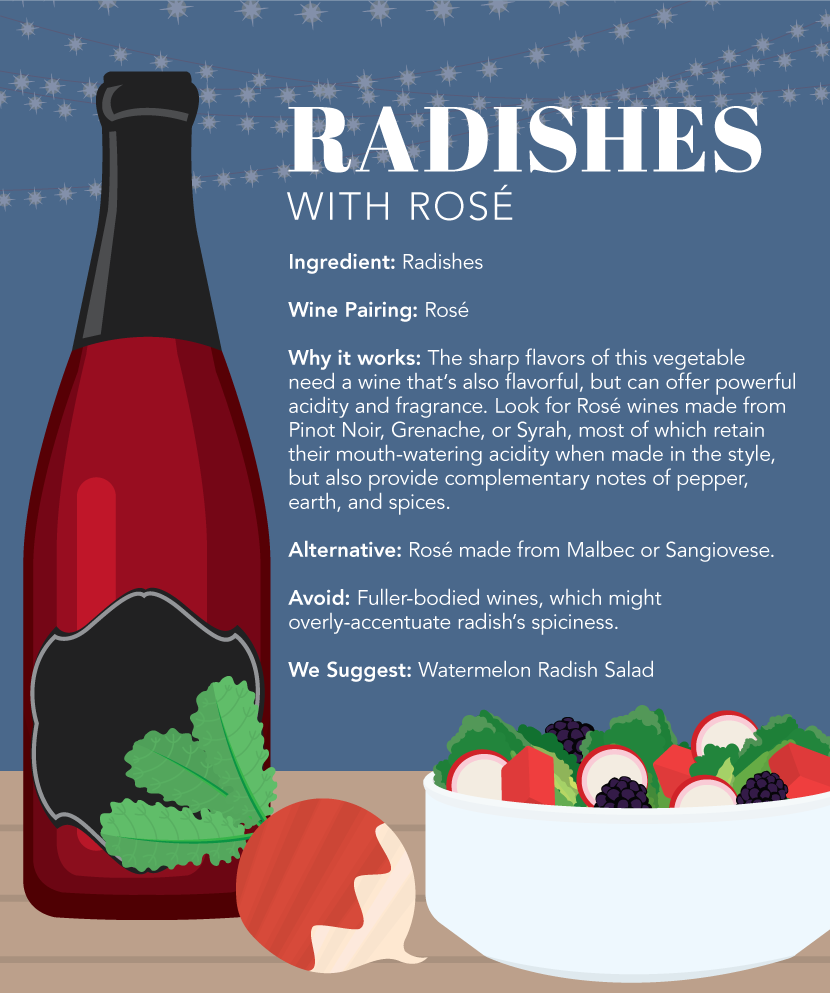
Tomatoes and Sangiovese
The tomato probably originated in what we now know as Peru. The success of the tomato,
with its toxic leaves and consisting mostly of water, almost boggles the mind.
According to vegetablefacts.net, over 90 percent of American gardening households grow tomatoes,
of which there are about 7,500 varieties. Led by China, worldwide production of tomatoes is around 145,000,000 tons annually!
Tomatoes are chock full of minerals and vitamins, as well as raging, face-ripping acidity.
It’s that acid content that makes the tomato a minefield of potential wine-pairing mishaps.
Thankfully, however, the Tuscans in Italy figured it out for us a long time ago.
In Tuscany, tomato-based dishes are often paired with the local kind of red grapes,
sangiovese (the primary grape in Chianti, as well as in other well-known Italian red wines).
Sangiovese’s earthiness, its red-berry flavors, and its potent acids make it a great match for this near-ubiquitous summer produce.
If white wines are more your thing, try Soave, a high-acid, palate-cleansing white wine (also from Italy) made primarily from the garganega grape.
Avoid lower-acid wines, such as viognier, grenache and merlot, at all costs if you like to liberally apply tomatoes to your summer meals.
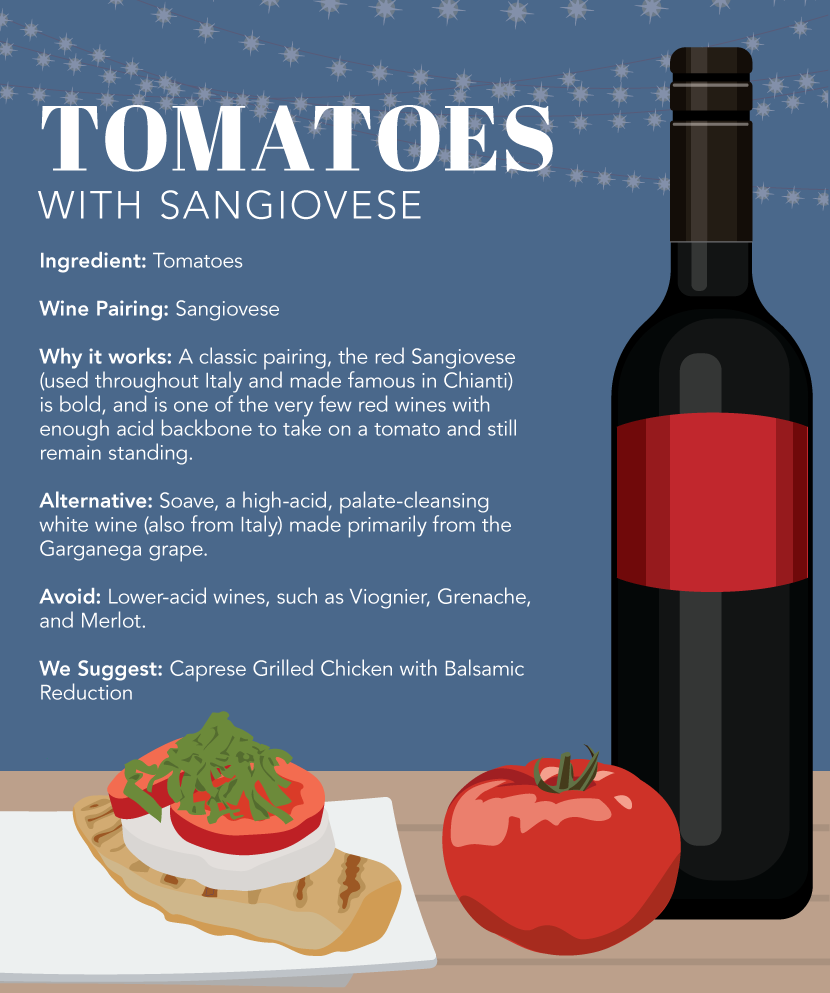
Peppers and Viognier
According to The Food Network, you can thank Christopher Columbus for our love of bell peppers, which are native to the tropics in the Western Hemisphere;
he brought them back to Spain, where they became a culinary hit. Peppers, of course,
come in just about any range of heat, from bland to sweet to tongue-meltingly hot.
It’s the sweet ones, which are incredible versatile, that we’re concerned with here
(the really hot ones will make mince-meat of pretty much any wine, as they accentuate the feeling of the drink’s alcohol content in the mouth).
While it’s not an obvious pairing to many, the white and heady viognier often provides an excellent match for sweeter peppers.
Young viognier wines have intense floral aromas and tropical fruit flavors, which contrast in delicious ways with the sweetness of summer peppers
For red wine lovers, the juicy, ripe fruit flavors and black pepper aromas of red zinfandel
work well with sweet peppers, particularly if they’re roasted and stuffed with meat.
What you’ll want to avoid here are sweet wines, which will likely overpower the mild sweetness
of the peppers and make them taste particularly bland (and summer, if anything, ought not to be bland).
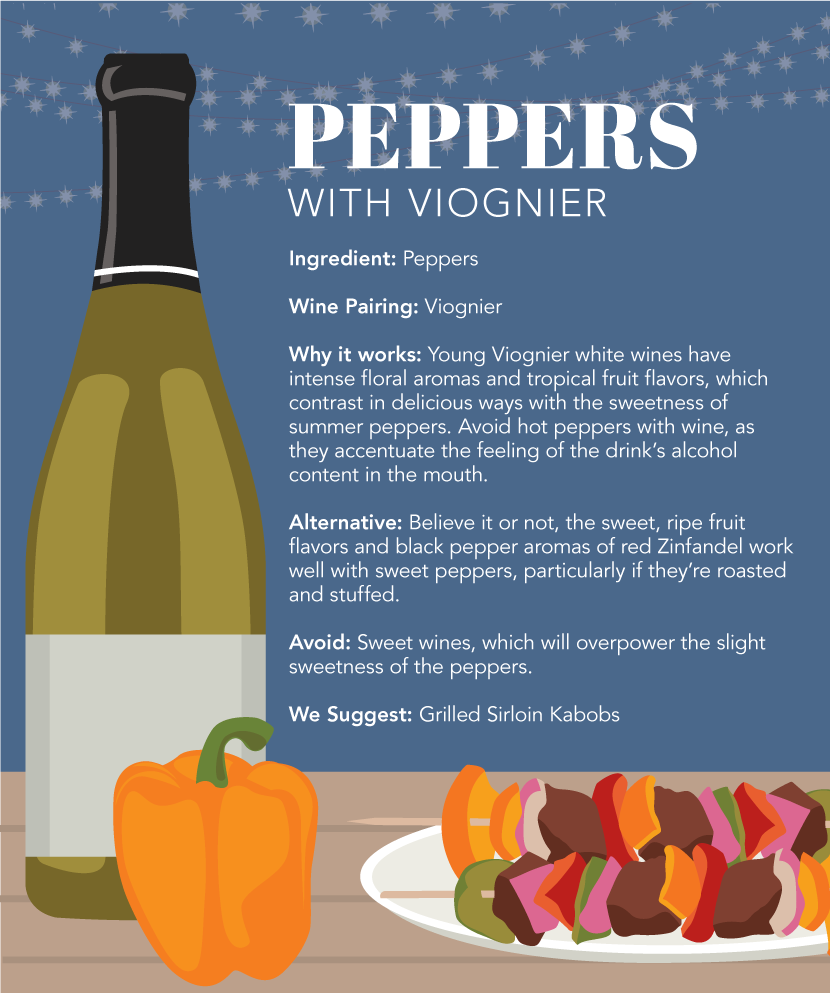
Just because the days are starting to get shorter, doesn’t mean the flavors have to get blander.
These delicious late-season wine pairings are sure to keep you satisfied until the leaves start to change!
Embed the article on your site

